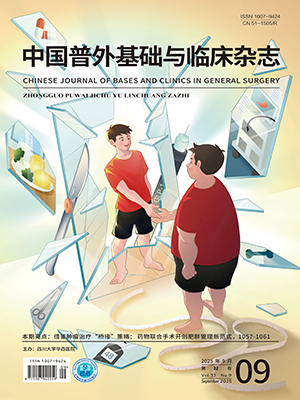| 1. |
Bekker LG, Beyrer C, Mgodi N, et al. HIV infection. Nat Rev Dis Primers, 2023, 9(1): 42. doi: 10.1038/s41572-023-00452-3.
|
| 2. |
Nkolola JP, Barouch DH. Prophylactic HIV-1 vaccine trials: past, present, and future. Lancet HIV, 2024, 11(2): e117-e124. doi: 10.1016/S2352-3018(23)00264-3.
|
| 3. |
Board NL, Moskovljevic M, Wu F, et al. Engaging innate immunity in HIV-1 cure strategies. Nat Rev Immunol, 2022, 22(8): 499-512.
|
| 4. |
Nachega JB, Scarsi KK, Gandhi M, et al. Long-acting antiretrovirals and HIV treatment adherence. Lancet HIV, 2023, 10(5): e332-e342. doi: 10.1016/S2352-3018(23)00051-6.
|
| 5. |
Kumar RN, Stosor V. Advances in liver transplantation for persons with human immunodeficiency infection. Curr Infect Dis Rep, 2022, 24(3): 39-50.
|
| 6. |
Tang J, Weng R, Fang T, et al. Clinical outcomes of liver transplantation in human immunodeficiency virus/hepatitis B virus coinfected patients in China. BMC Infect Dis, 2024, 24(1): 383. doi: 10.1186/s12879-024-09284-2.
|
| 7. |
Tang JX, Zhang KJ, Fang TS, et al. Outcomes of ABO-incompatible liver transplantation in end-stage liver disease patients co-infected with hepatitis B and human immunodeficiency virus. World J Gastroenterol, 2023, 29(11): 1745-1756.
|
| 8. |
Tang JX, Zhao D. Current status of liver transplantation for human immunodeficiency virus-infected patients in mainland China. World J Gastroenterol, 2024, 30(14): 1958-1962.
|
| 9. |
Campos-Varela I, Dodge JL, Berenguer M, et al. Temporal trends and outcomes in liver transplantation for recipients with HIV infection in Europe and United States. Transplantation, 2020, 104(10): 2078-2086.
|
| 10. |
Rossotti R, Merli M, Mazzarelli C, et al. Similar survival but higher and delayed hepatocellular carcinoma recurrence in HIV-positive compared to negative cirrhotics undergoing liver transplantation. Dig Liver Dis, 2023, 55(2): 268-275.
|
| 11. |
Bonny TS, Kirby C, Martens C, et al. Outcomes of donor-derived superinfection screening in HIV-positive to HIV-positive kidney and liver transplantation: a multicentre, prospective, observational study. Lancet HIV, 2020, 7(9): e611-e619. doi: 10.1016/S2352-3018(20)30200-9.
|
| 12. |
Dogar AW, Ullah K, Uddin S, et al. Liver transplantation in HIV-infected patient. J Coll Physicians Surg Pak, 2022, 32(12): 1635-1636.
|
| 13. |
Procaccio F, Masiero L, Vespasiano F, et al. Organ donor screening for carbapenem-resistant gram-negative bacteria in Italian intensive care units: the DRIn study. Am J Transplant, 2020, 20(1): 262-273.
|
| 14. |
Puri P, Kumar A, Qaleem M. Donor evaluation protocol for live and deceased donors. J Clin Exp Hepatol, 2024, 14(1): 101217. doi: 10.1016/j.jceh.2023.07.004.
|
| 15. |
Boyarsky BJ, Durand CM, Palella FJ, et al. Challenges and clinical decision-making in HIV-to-HIV transplantation: Insights from the HIV literature. Am J Transplant, 2015, 15(8): 2023-2030.
|
| 16. |
Di Benedetto F, Di Sandro S, De Ruvo N, et al. Human immunodeficiency virus and liver transplantation: our point of view. Transplant Proc, 2008, 40(6): 1965-1971.
|
| 17. |
Tateo M, Roque-Afonso AM, Antonini TM, et al. Long-term follow-up of liver transplanted HIV/hepatitis B virus coinfected patients: perfect control of hepatitis B virus replication and absence of mitochondrial toxicity. AIDS, 2009, 23(9): 1069-1076.
|
| 18. |
Irby JH, Anders ME, Beasley DA, et al. Patient- and family-centered care in the preoperative setting: Simulation cases featuring standardized patients for anesthesia residents. MedEdPORTAL, 2017, 13: 10604. doi: 10.15766/mep_2374-8265.10604.
|
| 19. |
Owotade FJ, Ogunbodede EO, Sowande OA. HIV/AIDS pandemic and surgical practice in a Nigerian teaching hospital. Trop Doct, 2003, 33(4): 228-231.
|
| 20. |
Khajeh E, Ramouz A, Aminizadeh E, et al. Comparison of the modified piggyback with standard piggyback and conventional orthotopic liver transplantation techniques: a network meta-analysis. HPB (Oxford), 2023, 25(7): 732-746.
|
| 21. |
Brustia R, Monsel A, Skurzak S, et al. Guidelines for perioperative care for liver transplantation: Enhanced Recovery After Surgery (ERAS) recommendations. Transplantation, 2022, 106(3): 552-561.
|
| 22. |
Olson JC, Subramanian R, Karvellas CJ. Intensive care management of liver transplant recipients. Curr Opin Crit Care, 2022, 28(6): 709-714.
|
| 23. |
Voshavar C. Protease inhibitors for the treatment of HIV/AIDS: Recent advances and future challenges. Curr Top Med Chem, 2019, 19(18): 1571-1598.
|
| 24. |
Roland ME, Stock PG. Liver transplantation in HIV-infected recipients. Semin Liver Dis, 2006, 26(3): 273-284.
|
| 25. |
Di Maira T, Little EC, Berenguer M. Immunosuppression in liver transplant. Best Pract Res Clin Gastroenterol, 2020, 46-47: 101681. doi: 10.1016/j.bpg.2020.101681.
|
| 26. |
Elliot E, Chirwa M, Boffito M. How recent findings on the pharmacokinetics and pharmacodynamics of integrase inhibitors can inform clinical use. Curr Opin Infect Dis, 2017, 30(1): 58-73.
|
| 27. |
Sparkes T, Manitpisitkul W, Masters B, et al. Impact of antiretroviral regimen on renal transplant outcomes in HIV-infected recipients. Transpl Infect Dis, 2018, 20(6): e12992. doi: 10.1111/tid.12992.
|
| 28. |
Andersen S, Fichera R, Banks M, et al. Proactive enteral nutrition for patients undergoing allogeneic stem cell transplantation- implementation and clinical outcomes. Eur J Clin Nutr, 2024, 78(3): 251-256.
|
| 29. |
Craig EV, Heller MT. Complications of liver transplant. Abdom Radiol (NY), 2021, 46(1): 43-67.
|
| 30. |
European Association for the Study of the Liver. Electronic address: easloffice@easloffice. eu. EASL Clinical Practice Guidelines: Liver transplantation. J Hepatol, 2016, 64(2): 433-485.
|
| 31. |
Buros C, Dave AA, Furlan A. Immediate and late complications after liver transplantation. Radiol Clin North Am, 2023, 61(5): 785-795.
|
| 32. |
Adam R, Karam V, Delvart V, et al. Evolution of indications and results of liver transplantation in Europe. A report from the European Liver Transplant Registry (ELTR). J Hepatol, 2012, 57(3): 675-688.
|
| 33. |
Neuberger J. Follow-up of liver transplant recipients. Best Pract Res Clin Gastroenterol, 2020, 46-47: 101682. doi: 10.1016/j.bpg.2020.101682.
|




